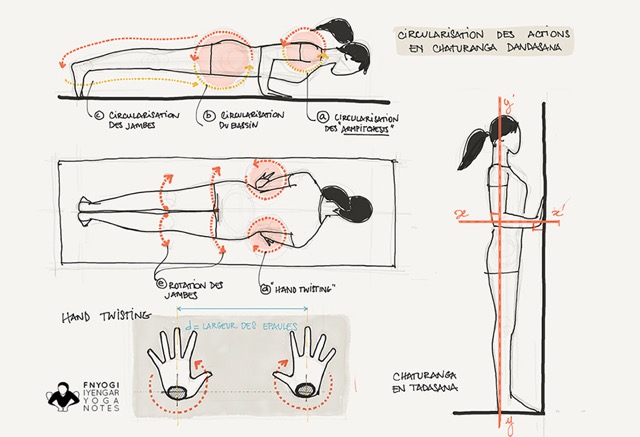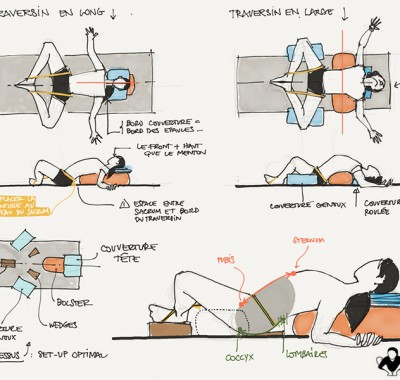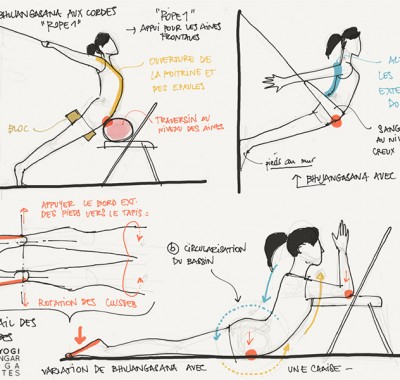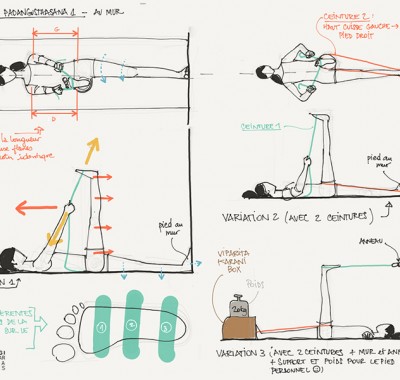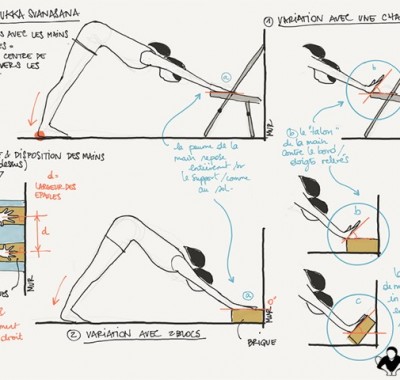The circularization of exchanges in Chaturanga Dandasana.
Chaturanga dandasana means something like “the four feet stick” … a very harmless translation when you think about the difficulty of this asana. In our examination syllabus (in Germany) we officially have to hold the pose 1 minute – 60 long seconds !!!
An impossible mission so to say. Even the toughest guys in our group cannot make it. A few seconds for me and I will have to go up several times while waiting for the chrono sounds.
So it’s kind of the unloved child of our sequence. Yet I do not despair because two years ago, I was wondering if one day I would manage to get into the posture from the ground. I’m getting there now and I even get to enjoy this asana, both powerful and elegant.
There is no good Chaturanga Dandasana without a good Tadasana!
First is ALWAYS Tadasana. This posture is unfortunately often neglected. But without a good understanding of Tadasana, one can NEVER reach a good Chaturanga Dandasana .
First of all, you have to observe the horizontality of the pose, the proper placement of the hands and finally the alignment of the head to the heels through the shoulders, the pelvis and the knees.
So before hoping you return cleanly to Chaturanga Dandasana, you must practice to understand these basic elements by practicing on the wall – as shown on drawing on the right, and then do the same thing horizontally (if I may use the expression).
The circularization of actions
As always, this article alone cannot describe all that there is to say about this asana and it does not deal with the different variations that make it possible to gradually approach the pose without props.
Today, I would like to focus on one particular aspect that personally helped me to understand and hold the posture and not just the strength of my arms: the circularization of certain actions in Chaturanga Dandasana.
It is a fatal mistake to believe that only the strength of the triceps is necessary for Chaturanga. In my opinion triceps should only do 50% of the job.
The circular movements described below and illustrated above make it possible to obtain a compactness in the body.
a) Circularization of the armpitchests
This point is ESSENTIAL: the shoulder blades descend in the back and against the posterior ribs, the chest opens forward.
In progress, I often see shoulders pointing down and a bump in the back (in principle it goes together) in order to compensate for the lack of strength in the trunk and arms. Be careful this bad placement causes a bursitis in the long term. This inflammation of the subacromial bursa should be avoided at all costs for it is very difficult to heal.
b) Circularization of the pelvis
c) Circularization of the legs
d) Legs rotation
These three points go together since they concern the action in the legs. These are the same points as in Tadasana.
The action of the pelvis is well known, one pushes the tailbone down, while the pubis bone rises.
The back of the legs is extended towards the heels while the whole front legs goe towards the pelvis.
Finally, the legs rotate on their own axis towards the outside.
These three actions together make the legs compact and strong and make them contribute to lift.
e) Hand twisting
Finally, the simple action of turning out the hands makes allows the shoulders to activate, rolling back and down from the ears. More specifically, the elbows will stick to the ribs allowing more compactness of the trunk.
In conclusion, these circular movements are found in many postures but as Chaturanga Dandasana requires a lot of strength, putting these actions in place to achieve a certain compactness, especially in the legs, will help you to hold the pose and not only thanks to your triceps.
You can find Fanny also on her own blog Iyengar yoga notes – http://www.iyengaryoganotes.com

